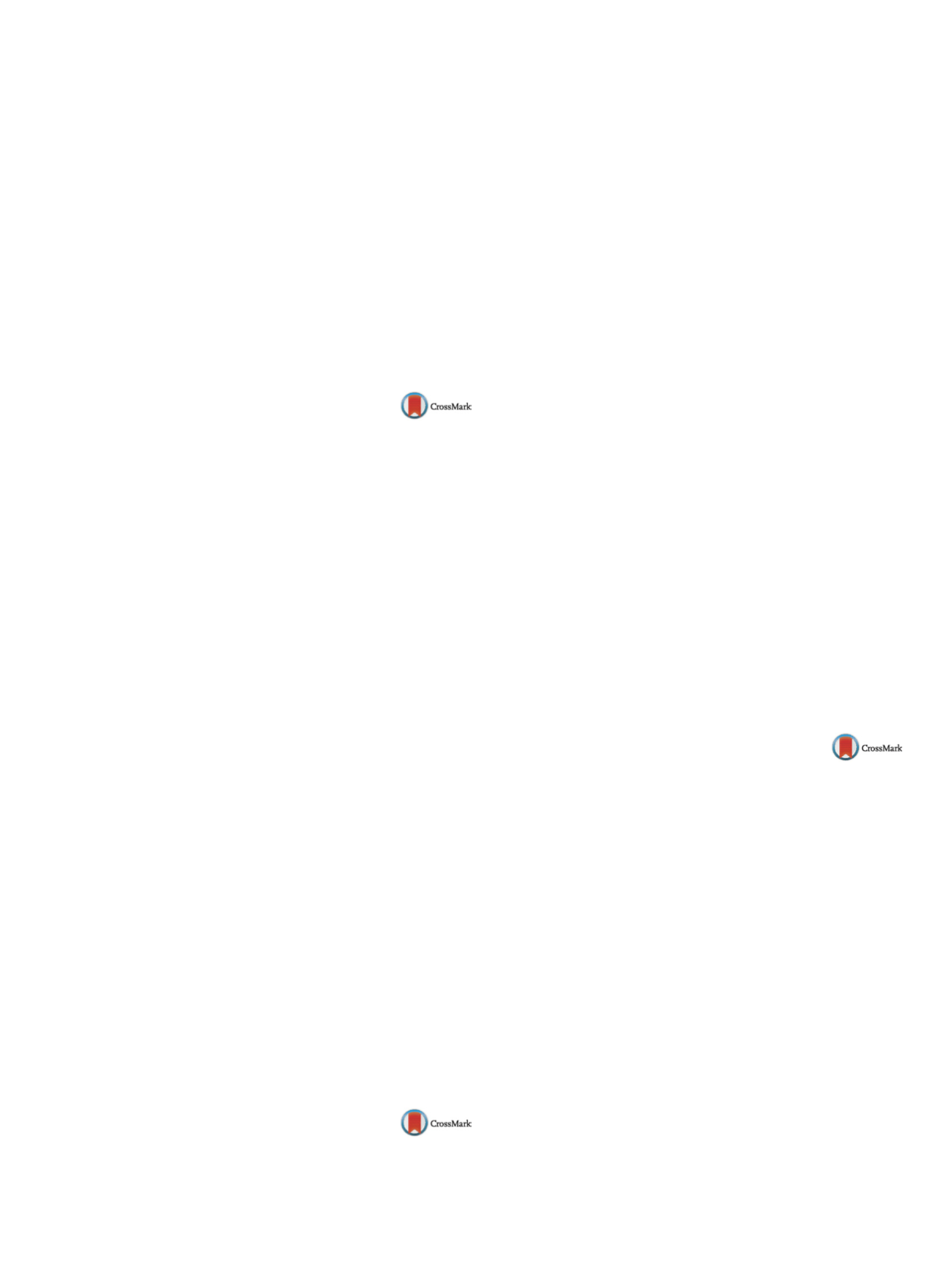

25th European Congress of Psychiatry / European Psychiatry 41S (2017) S847–S910
S899
desire to eat sweets in two cycles, before and during the interven-
tion, was recorded by the students. The data were analyzed using
descriptive and inferential statistics.
Results
The comparison of vitamin B1 group before and after
the intervention showed that vitamin B1 reduced mean men-
tal (35.08%) symptoms significantly (
P
< 0.0001). The reduction of
severity was observed in desire to eat sweets was 2.42%. The aver-
age of mental symptoms severity of PMS has been reduced in
vitamin B1 group, and the comparison was significantly different.
Conclusions
Therefore, vitamin B1 is recommended for reduction
of symptom severity of PMS include desire to eat sweet. This vita-
min can be used to reach a major goal of midwifery, without any
side effects.
Disclosure of interest
The authors have not supplied their decla-
ration of competing interest.
http://dx.doi.org/10.1016/j.eurpsy.2017.01.1834EV1505
“Hear me out”: Experiences of
mothers suffering from severe mental
illness with health care providers –
A qualitative perspective
D. Banerjee
∗
, G. Desai , P.S. Chandra
National Institute of Mental Health and Neurosciences, Psychiatry,
Bangalore, Karnataka, India
∗
Corresponding author.
Background
Contrary to popular myth, majority of mentally ill
women are mothers with increasing number of them seeking help.
Little is known about their own experiences in this regard and the
extent to which their needs are met.
Objectives
To assess the barriers and facilitators in seeking help
from mental health care providers in matters of pregnancy and
parenting.
Methods
The study used qualitative design with social con-
structivist paradigm. A purposive sample of 30 mothers with
severe mental illness was obtained. Data was collected through
one-to-one in-depth semi-structured interviews. After verbatim
transcription, inductive thematic analysiswas used to explore tran-
scripts.
Results
Most women considered motherhood “central” to their
lives and almost all of them experienced the burden of the
“dual role”. Main barriers in seeking help were stigma, treat-
ment side effects, wrong information and time constraints.
Whereas self-advocacy, early engagement, education of women
and involvement of the family with service providers were the
facilitating factors. The prime expectations of the mothers as
identified were early and direct communication, patient audi-
ence and basic guidance in regards to child health and parenting
issues.
Conclusion
Women who are mothers and also users of mental
health services face special challenges in managing the contra-
dictory aspects of their dual identity. Hearing their voices are
essential for service provision and ensuring adequatemental health
needs. Early and direct intervention along with understanding and
addressing critical areas are necessary for proper care of both the
mother and child.
Disclosure of interest
The authors have not supplied their decla-
ration of competing interest.
http://dx.doi.org/10.1016/j.eurpsy.2017.01.1835EV1506
Correlation between self-efficacy and
well-being, and distress, in women
with unexplained infertility
B. Batinic
1 ,∗
, J. Lazarevic
2, S. Dragojevic-Dikic
31
Clinic for Psychiatry Clinical Centre of Serbia, Faculty of Philosophy,
Department of Psychology, Belgrade, Serbia
2
Faculty of Philosophy, Department of Psychology, Belgrade, Serbia
3
Obstetrics and Gynecology Clinic “National front”, Department of
Obstetrics, Belgrade, Serbia
∗
Corresponding author.
Introduction
One of the most difficult aspects of unexplained
infertility treatments are feelings of uncertainty and the percep-
tion that infertility is beyond one’s personal control, both of which
make the infertility situation more threatening and stressful.
Objectives
The aim of this study was to explore the correlation
between general self-efficacy and infertility specific well-being and
distress among women with unexplained infertility.
Methods
The sample consisted of 97 women with unexplained
infertility aged between 22 and 46 years old (mean age: 33.58), who
were recruited from the obstetrics and gynecology clinic “National
front”. Mean duration of conception attempts was 3.10 years. The
General Self-Efficacy Scale and the Infertility Specific Well-Being
and Distress Scales were applied in the study.
Results
The mean score on the General Self-Efficacy Scale was
32.77 (SD = 4.624), on the Well-Being scale 3.22 (SD = 0.984) and on
the Distress scale 1.94 (SD = 0.754). There was a positive correla-
tion between intensity of infertility specific well-being and general
self-efficacy (
r
= 0.502;
P
< 0.01) and a negative correlation between
infertility specific distress and general self-efficacy (
r
=
−
0.265;
P
< 0.01). Women with unexplained infertility with higher self-
efficacy expressed higher levels of well-being and lower levels of
distress.
Conclusion
The results of our study indicate that women with
unexplained infertility who perceive their problems as being
beyond their control express higher levels of stress and lower
levels of well-being. Psychological treatment of women with unex-
plained infertility should focus on the aspects that can be influenced
through psychotherapy.
Disclosure of interest
The authors have not supplied their decla-
ration of competing interest.
http://dx.doi.org/10.1016/j.eurpsy.2017.01.1836EV1507
Women with hysterical
manifestations: Menopause, gender
and mental health
N. Bokha
n 1 ,∗
, E .V. Lukiyanova
21
Mental Health Research Institute, Tomsk National Research Medical
Center, Russian Academy of Sciences, Administration, Tomsk, Russia
2
Mental Health Research Institute, Tomsk National Research Medical
Center, Russian Academy of Sciences, Clinical Psychiatric Unit, Tomsk,
Russia
∗
Corresponding author.
Introduction
Aging and menopause as a medico-social determi-
nant of female gender influence on mental health. Female gender
in the period of menopause is associated with the end of fertility
that affects adaptation to changed conditions, decreases intellec-
tual and physical possibilities, narrows role positions, leads to
non-psychotic mental disorders (NPMD).
Objective
To identify influence of the age, menopause, female sex,
sociodemographic parameters on hysterical symptoms in structure
of NPMD.
Material
In the borderline states department, 93 female patients
with hysterical manifestations in structure of NPMD were treated.
Methods
Psychopathological, clinical-dynamic, clinical-catam-
nestic, psychometric, psychological and statistical.
Results
In 100%, the hysterical symptoms in the puberty leveled
at reproductive age, intensified in climax: 72.04% - pre-menopause
(
P
< 0.05), meno-, postmenopause - 13.98% each. Sociodemographic
characteristics (marital status, social status, place of living, educa-
tion, family composition, family relations) were not interrelated


















